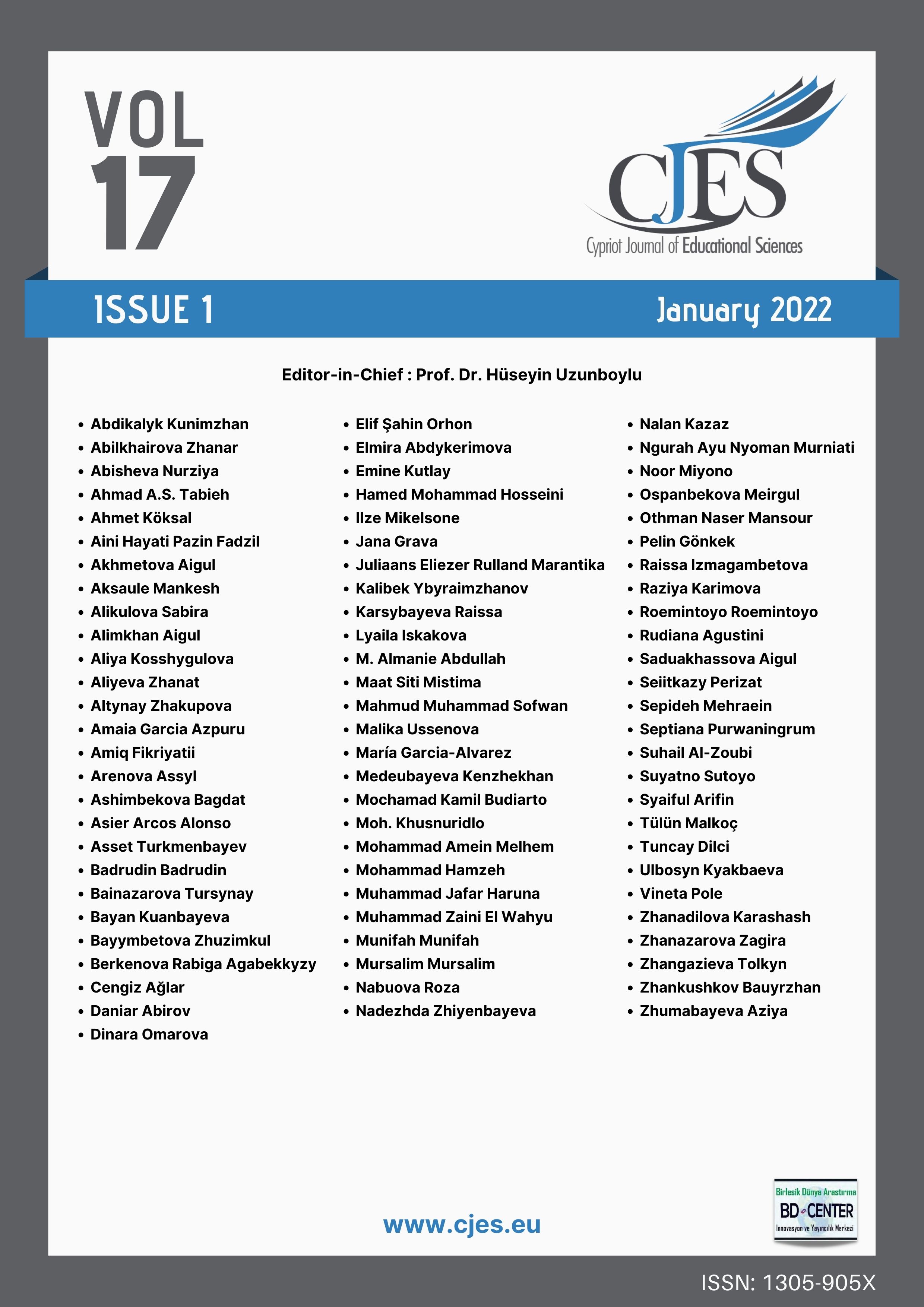Adaptation of students to professional-oriented activities based on media technologies
Main Article Content
Abstract
Media technologies make it simple for students to access accurate information wherever and whenever they want at a lower cost, however, many studies show that children do not see a difference between the real world and the fictional media world until they reach the age of 12. This study aims to determine primary school students' professional activity adaptation based on media technologies. The study was conducted in the spring term of 2020 - 2021, with 339 elementary school students voluntarily participating. The "Media technologies" questionnaire developed by the researchers was applied to primary school students. The questionnaire was developed and edited by experts in the field. Collected data were analyzed using an SPSS program. Frequency, percentage, average, standard deviation, minimum and maximum values, One Way Anova, and T-test were applied to analyze the data obtained from the media technologies survey. According to the results of the study, it was concluded that elementary school students have high results in determining media technologies concepts.
Keywords: Media technologies, Distance Education, Primary School Students, Performance, Adaptation
Downloads
Article Details

This work is licensed under a Creative Commons Attribution 4.0 International License.
Cypriot Journal of Educational Sciences is an Open Access Journal. The copyright holder is the author/s. Licensee Birlesik Dunya Yenilik Arastirma ve Yayincilik Merkezi, North Nicosia, Cyprus. All articles can be downloaded free of charge. Articles published in the Journal are Open-Access articles distributed under a CC-BY license [Attribution 4.0 International (CC BY 4.0)].
Birlesik Dunya Yenilik Arastirma ve Yayincilik Merkezi (BD-Center)is a gold open-access publisher. At the point of publication, all articles from our portfolio of journals are immediately and permanently accessible online free of charge. BD-Center articles are published under the CC-BY license [Attribution 4.0 International (CC BY 4.0)], which permits unrestricted use, distribution, and reproduction in any medium, provided the original authors and the source are credited.

